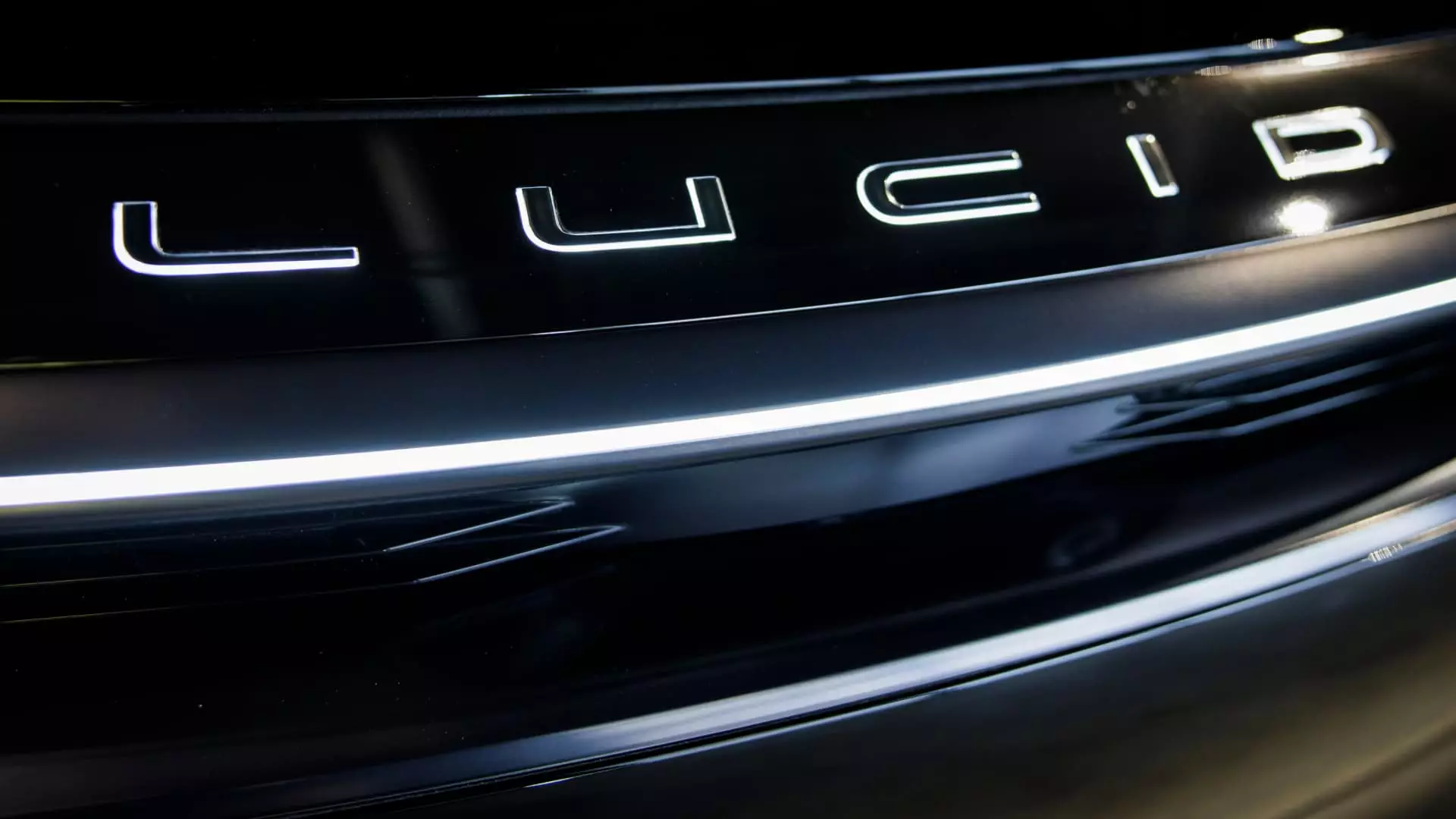Lucid’s recent financial disclosures reveal a sobering reality: the electric vehicle (EV) darling is not living up to its lofty aspirations. Once seen as a potential Elon Musk rival, Lucid now finds itself mired in disappointment, not because it lacks innovative spirit, but because the market itself has turned treacherous and unreliable. The company’s decision to cut its annual production forecast from 20,000 to a mere 18,000-20,000 vehicles exposes a fundamental flaw—overconfidence amid undeniable industry headwinds. For investors, this isn’t just a missed target; it’s a wake-up call questioning whether Lucid’s lofty promises are rooted in strategic vision or wishful thinking.
This cautious revision reflects a larger truth about the EV industry: despite the hype, the sector is not immune to market realities. Lucid’s CEO’s remarks about experiencing the most surprises in a year underscore how fragile the current ecosystem is. Overambitious plans, once seen as bold and innovative, now appear as risky gambles. The company’s insistence on still aiming for the high end of its revised range feels more like loyalty to an unattainable goal than a realistic projection. In an environment where supply chains are volatile and consumer preferences are shifting, overly optimistic plans can be more destructive than inspiring.
Financial Struggles and the Mirage of a Rapid Turnaround
Lucid’s latest earnings cast a spotlight on why the company’s future is anything but certain. A net loss of $855 million in just three months is staggering, particularly when compared with the previous year’s losses. Despite increasing vehicle deliveries by over 38%, Lucid remains fundamentally unprofitable, bleeding cash at an alarming rate. The company’s liquidity of nearly $4.86 billion provides some buffer, but that cushion could evaporate fast if sales do not accelerate, or if costs continue to rise unchecked.
What’s most disconcerting is how Lucid’s strategic moves—such as partnering with Uber or investing in brand campaigns—appear to be more about temporary band-aids than sustainable growth. The partnership with Uber to deploy robotaxis presents potential, but it’s a long-term gamble with substantial regulatory and operational hurdles yet to be addressed. Meanwhile, initiatives to woo consumers with high-profile advertising featuring Timothée Chalamet may boost brand recognition temporarily, but they won’t fix fundamental issues: production delays, supply chain disruptions, and waning consumer interest in premium EVs.
The reality is that Lucid’s focus on luxury, high-performance vehicles may be a strategic liability in the current economic climate. With consumers increasingly concerned about affordability, the shift toward more budget-friendly hybrids signifies a broader systemic challenge: can EV manufacturers sustain growth without tapping into a larger, more diverse customer base? As demand for premium EVs plateaus, Lucid’s high-end offerings risk becoming niche products, limiting growth potential and leaving the company vulnerable to market downturns.
Economic and Political Headwinds Threaten the Future
Adding to Lucid’s woes is the precarious political landscape. The recent rollback of federal EV tax credits is a significant blow, one that jeopardizes future sales and strategic partnerships. Ending the $7,500 credit for new EVs and the $4,000 for used EVs will likely dampen consumer enthusiasm, especially for more expensive vehicles like those produced by Lucid. For a company already struggling with sales volume, such policy shifts are not incidental—they are catalytic.
This legislative shift exposes a troubling truth: the U.S. government’s current approach to EV incentives lacks consistency, which in turn destabilizes investor confidence. While the industry has been banking on government subsidies to accelerate adoption, the retreat of these incentives signals that the era of cheap EVs may be coming to an end. For Lucid, which has poured resources into expanding production and marketing efforts, this is a clarion call to reassess whether surviving in this nascent industry requires more than just ambition—it demands adaptability and pragmatic strategy.
Moreover, the broader economic uncertainty—rising interest rates, inflation, and global supply chain disruptions—may well depress EV sales further. The industry’s growth prospects are now clouded by factors beyond any company’s control, making Lucid’s optimistic forecasts look increasingly out of touch with reality. If anything, the company’s struggles highlight how the EV push, while revolutionary in scope, remains constrained by unpredictable economic forces that many industry leaders have yet to master.
Conclusively, Lucid’s predicament serves as a sobering mirror to an industry at a crossroads.
In the grand scheme, Lucid’s recent struggles illustrate the peril of overextension in a fragile industry. The company’s lofty ambitions are hampered by economic headwinds, political shifts, and a consumer base that has yet to fully embrace premium EVs for mass adoption. Its financial missteps, production delays, and reliance on optimistic projections reveal that even the most innovative companies cannot escape the brutal realities of market forces.
In my view, Lucid’s predicament underscores a deeper truth about progress in the electric vehicle industry: innovation alone cannot guarantee success. Market readiness, political stability, and consumer confidence are equally critical factors. For a center-leaning observer, it’s clear that sustainable growth hinges on balancing ambitious vision with tempered pragmatism—a lesson Lucid and its peers must learn if they hope to sustain their relevance in a rapidly shifting landscape.

